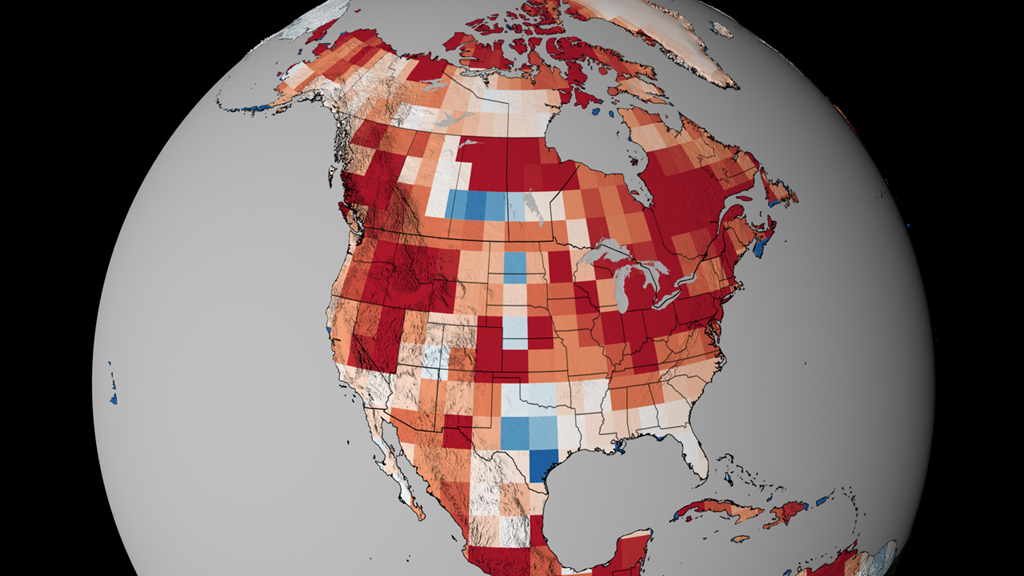Potential Evaporation in North America Through 2100
This animation shows the projected increase in potential evaporation during the fire season through the year 2100, relative to 1980, based on the combined results of multiple climate models: MERRA data for 1980-2010 and an ensemble of 20 climate models for 2010-2100. The maximum increase across North America is about 1 mm/day by 2100. This concept, potential evaporation, is a measure of drying potential or "fire weather." An average increase of 1 mm/day over the whole year is a big change — 1 mm/day increase in PE is considered to be an "extreme" event for fires, similar to the conditions in Colorado in 2012. By these projections, fire years like 2012 would be the new normal in regions like the western US by the end of the 21st century.
Potential Evaporation with Respect to 1980
No Colorbar, No Dates

Colorbar
Credits
Please give credit for this item to:
NASA's Goddard Space Flight Center Scientific Visualization Studio
-
Animator
- Trent L. Schindler (USRA)
-
Producers
- Alison Schuyler Ogden (NASA/GSFC)
- Michelle Handleman (USRA)
-
Scientist
- Doug C. Morton (NASA/GSFC)
Release date
This page was originally published on Friday, August 9, 2013.
This page was last updated on Tuesday, November 14, 2023 at 12:04 AM EST.
Datasets used in this visualization
-
MERRA
ID: 684 -
CMIP5 (Coupled Model Intercomparison Project Phase 5)
ID: 797
Note: While we identify the data sets used in these visualizations, we do not store any further details, nor the data sets themselves on our site.
